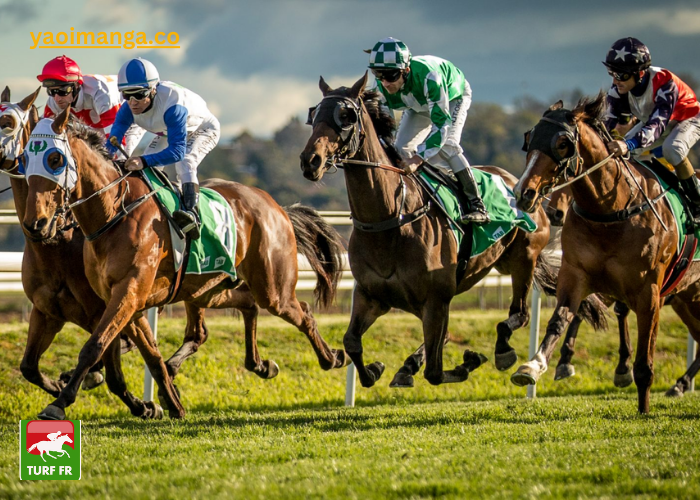In the thrilling world of horse racing, where speed, strategy, and skill converge, there exists a group of individuals who are often overshadowed by the thundering hooves and roaring crowds. They are the Observateurs du Turf, the watchful eyes of horse racing. While not in the spotlight, these masters of the turf play a pivotal role in the sport’s dynamics. In this comprehensive article, we will unveil the world of Observateur du Turf, exploring its origin, its contemporary relevance, and how it silently but profoundly influences the realm of horse racing.
The Essence of Observateur du Turf
At its core, Observateur du Turf is not just a label, it’s a multifaceted concept that encapsulates the essence of what it means to engage deeply with horse racing. Let’s delve into its fundamental aspects.
The Art of Observation
Observation is the cornerstone of becoming a true Observateur du Turf. It involves more than just watching races; it’s about developing a discerning eye to scrutinize every detail, from the flicker of a horse’s ear to the nuances in a jockey’s body language. This art of observation extends beyond the racetrack and into the stables, training sessions, and even the history of each horse.
The Data Driven Mindset
In the age of digitalization, Observateurs du Turf recognize the importance of data. They collect, analyze, and interpret a vast array of statistics, ranging from past race performances and breeding pedigrees to track conditions and jockey records. This data-driven approach allows them to make informed decisions and predictions, elevating their understanding of the sport.
The Pursuit of Mastery
Observateur du Turf is not a static role, it’s a journey toward mastery. It’s about embracing continuous learning, refining one’s skills, and adapting to the ever-evolving landscape of horse racing. This pursuit of mastery distinguishes the dedicated from the casual and sets the stage for lasting success.
Historical Significance
The roots of Observateur du Turf trace back to the rich history of horse racing. In days gone by, before the advent of technology and data analytics, there were keen observers who played pivotal roles in shaping the sport.
The Early Pioneers
Horse racing has a storied history dating back centuries. In its early days, there were no sophisticated databases or high-speed cameras. Instead, there were astute individuals who closely observed horses, jockeys, and track conditions. These early Observateurs du Turf laid the foundation for the modern understanding of the sport.
An Intuitive Craft
Observation in the past was entirely analog. Trainers, jockeys, and horse owners relied on their senses and intuition to assess a horse’s readiness and potential. This hands on, intuitive craft was the heart and soul of early turf observation.
Passing Down Wisdom
Knowledge about horse racing was often transmitted through an oral tradition. Observations, insights, and strategies were shared within a close knit community of enthusiasts. This tradition of mentorship and knowledge transfer is a testament to the enduring appeal of horse racing.
Modern Day Observateur du Turf
In today’s digital age, the role of Observateur du Turf has evolved, adapting to the influx of technology, data, and global accessibility.
The Digital Advantage
The digital revolution has opened up new frontiers for Observateurs du Turf. They now have access to a wealth of data and information, which includes historical race results, performance metrics, and breeding pedigrees. This treasure trove of data informs their analyses and enhances their insights.
Technological Tools
Advanced tools and technologies, such as high speed cameras, heart rate monitors, and GPS trackers, provide real-time data on horses’ performances. Observateurs du Turf use these tools to gain a more comprehensive understanding of the physical and psychological aspects of racing.
A Global Perspective
The internet and international broadcasting have expanded the horizons of Observateurs du Turf. They can now follow races from around the world, gaining exposure to a broader range of racing conditions, strategies, and cultures.
The Art of Betting and Strategy
A significant aspect of being an Observateur du Turf is the ability to enhance betting strategies. Betting on horse races is an intricate dance between risk and reward, and Observateurs du Turf approach it with a unique mindset.
Risk Management
Observateurs du Turf understand that betting is not a game of chance but a calculated risk. Through their meticulous observations and data analysis, they can make more informed bets, mitigating the inherent risks associated with gambling.
Value Betting
One of the hallmarks of Observateurs du Turf is their knack for identifying value bets. These are opportunities where the odds offered on a horse are more favorable than the horse’s actual chances of winning. This skill is honed through a combination of observation, data analysis, and market assessment.
Bankroll Management
Being responsible with one’s betting bankroll is paramount. Observateurs du Turf exercise discipline, avoiding reckless bets and maintaining a long-term perspective. This disciplined approach ensures that they can weather losses and capitalize on wins.
The In Depth Analysis
At its core, Observateur du Turf is about analyzing every facet of horse racing comprehensively. It involves studying the horses, their past performances, jockeys, trainers, track conditions, and more. It’s about going beyond the surface and delving into the intricate details that can influence the outcome of a race.
Conclusion
In the grand tapestry of horse racing, Observateurs du Turf are the threads that hold it all together. While they may remain in the shadows, their influence is pervasive and their contributions immeasurable. They are the unseen masters of the turf, the guardians of ethics, and the torchbearers of tradition. In their unwavering pursuit of knowledge and their unrelenting commitment to the sport, Observateurs du Turf exemplify the very essence of horse racing, a harmonious blend of art and science, tradition and innovation, passion, and precision.
